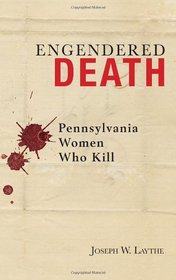Search -
Engendered Death: Pennsylvania Women Who Kill
Engendered Death Pennsylvania Women Who Kill
Author:
.cs95E872D0{text-align:left;text-indent:0pt;margin:0pt 0pt 0pt 0pt} .csA62DFD6A{color:#000000;background-color:transparent;font-family:Times New Roman; font-size:12pt; font-weight:normal; font-style:italic; } .cs5EFED22F{color:#000000;background-color:transparent;font-family:Times New Roman; font-size:12pt; font-weight:normal; font-style:n... more »
Author:
.cs95E872D0{text-align:left;text-indent:0pt;margin:0pt 0pt 0pt 0pt} .csA62DFD6A{color:#000000;background-color:transparent;font-family:Times New Roman; font-size:12pt; font-weight:normal; font-style:italic; } .cs5EFED22F{color:#000000;background-color:transparent;font-family:Times New Roman; font-size:12pt; font-weight:normal; font-style:n... more »
ISBN-13: 9781611460926
ISBN-10: 1611460921
Publication Date: 12/16/2011
Pages: 212
Rating: ?
ISBN-10: 1611460921
Publication Date: 12/16/2011
Pages: 212
Rating: ?
0 stars, based on 0 rating
Publisher: Lehigh University Press
Book Type: Hardcover
Members Wishing: 1
Reviews: Amazon | Write a Review
Book Type: Hardcover
Members Wishing: 1
Reviews: Amazon | Write a Review
Genres:
- Biographies & Memoirs >> True Crime >> Murder & Mayhem
- Biographies & Memoirs >> True Crime >> Serial Killers
- History >> Americas >> United States >> State & Local
- Politics & Social Sciences >> Crime & Criminals >> Criminology
- Nonfiction >> Social Sciences
- Nonfiction >> Women's Studies >> Feminist Theory




